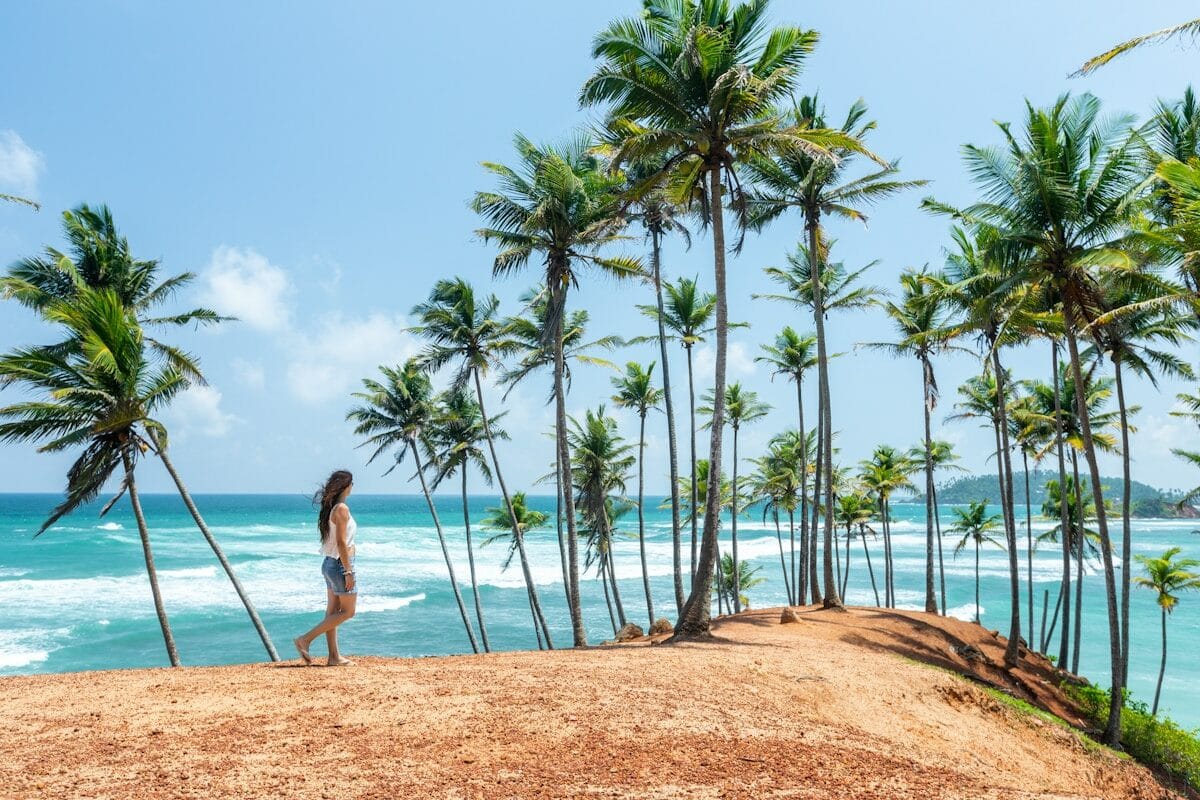Ayurveda as Everyday Life- What Happens When You Spend 22 Days Doing Yoga in Rural Sri Lanka?
Experience transformative yoga and Ayurveda in Sri Lanka as women embrace holistic health, self-care and mindfulness through authentic daily practice

The sweat drips steadily during morning pranayama, each controlled breath echoing through the outdoor shala as the Sri Lankan sun climbs higher. Around you, twelve other women sit in concentrated silence, their faces reflecting the same mixture of determination and surrender that’s become familiar over the past fortnight. This isn’t Instagram yoga – this is the messy, honest reality of spending 22 days learning what happens when you step completely away from routine and let an ancient practice do its work.
At Plantation Villa, set across 30 acres of lush tropical greenery in rural Sri Lanka, the June teacher training has reached its midpoint. The days blur together in the best possible way: early morning meditation, hours of physical practice, afternoon philosophy discussions and evening meals shared under the stars. The women here didn’t come for perfect poses or social media content – they came seeking something deeper.
The Krishnamacharya Lineage
The training follows the authentic teachings of T. Krishnamacharya, known as the father of modern yoga. Krishnamacharya revolutionised yoga in the 20th century by reviving ancient practices and developing the Vinyasa style that synchronises breath with movement. His emphasis on individualised teaching – adapting practices to each person’s needs rather than forcing bodies into rigid poses – shapes everything that happens at Plantation Villa.
Under the guidance of lead teacher Bernardo Staut and a team of experienced instructors, participants dive deep into this lineage. The integration of traditional Ayurvedic principles with yoga practice creates a holistic approach that extends far beyond the mat. This isn’t about learning sequences to teach back home – it’s about understanding yoga as a complete system for physical health, mental clarity and spiritual development.
The Daily Rhythms
The alarm sounds at 5.30am, but most women are already awake, their bodies naturally adjusting to the retreat’s rhythm. Morning meditation begins in darkness, the sounds of awakening birds gradually joining the collective breathing. By sunrise, the group is moving through pranayama practices that challenge both lung capacity and mental focus.
The physical practice that follows is intense but carefully structured. Each day builds on the last, with modifications offered for different abilities and energy levels. The afternoon sessions dive into yoga philosophy, anatomy and teaching methodology. These aren’t dry academic lectures – they’re practical explorations of how ancient wisdom applies to modern life.
Between formal sessions, there’s time for rest, journaling and quiet conversation. The tropical setting provides natural boundaries that smartphones back home never could. Without the constant ping of notifications, attention settles into a different quality of presence.
Honest Reflections
The tears come unexpectedly during week two. Not from physical pain, but from the emotional release that happens when you create space for feelings that usually get pushed aside. The group connection becomes crucial during these moments – women who started as strangers now offer tissues and quiet support without judgment.
‘This training went beyond postures – it was a journey into the heart of yoga,’ reflects one June graduate. ‘The knowledge, the setting and the connections we built will stay with me forever.’ Her words capture what many participants discover: that the real work isn’t about perfecting poses, but about developing a different relationship with yourself.
Another participant adds: ‘Plantation Villa created the ideal environment to learn and heal. I leave with confidence in my teaching abilities and a deeper connection to myself.’ This confidence doesn’t come from memorising sequences, but from understanding yoga’s therapeutic potential and learning to adapt practices for individual needs.
Ayurveda as Everyday Life
The Ayurvedic component isn’t an add-on or spa treatment – it’s woven into daily life through meal planning, lifestyle guidance and understanding how different practices affect different body types. The on-site Ayurveda team works with participants to understand their individual constitutions and how to maintain balance through diet and routine.
Meals are entirely vegetarian, designed according to Ayurvedic principles that emphasise eating in harmony with natural rhythms. The food is fresh, locally sourced and prepared with medicinal herbs and spices. Many participants notice improved digestion, better sleep and increased energy levels – practical outcomes that extend beyond the retreat.
The daily routines incorporate Ayurvedic practices like tongue scraping, oil massage and eating according to your dosha. These aren’t presented as mystical rituals but as practical tools for maintaining health and balance. The approach remains grounded in traditional knowledge while acknowledging modern life’s realities.
Beyond Certification
The 200-hour certification that participants receive is recognised internationally by Yoga Alliance, enabling them to teach anywhere in the world. But the emphasis throughout the training remains on personal growth rather than job prospects. Some graduates will indeed become teachers; others will simply carry their deepened practice back to their regular lives.
Research on yoga practitioner motivations confirms that spiritual aspects and personal development often matter more than professional outcomes. The friendships formed during the intensive frequently outlast the training itself, creating support networks that span continents.
Many graduates report lasting changes in their relationship with stress, their approach to physical health and their understanding of what self-care actually means. The confidence they gain comes not from mastering difficult poses, but from learning to listen to their bodies and trust their intuition.
The Sensory Reality
As the training draws to a close, participants often spend their final evening sitting quietly on the villa’s terraces, watching the sun set over the canopy. The sounds of the jungle create a natural soundtrack – birds calling, leaves rustling, the distant temple bells that mark the village’s evening prayers.
The air carries the scent of frangipani and the smoke from cooking fires in nearby homes. After three weeks of this sensory immersion, the prospect of returning to air-conditioned offices and traffic noise feels almost surreal. Perhaps that’s the point – to carry this sense of natural rhythm and unhurried presence back into ordinary life.
The true offering of an experience like this isn’t the pursuit of perfection or the promise of becoming a different person. It’s the chance to hit pause and discover something honest within yourself – something that was always there, waiting for sufficient quiet to emerge. Whether that leads to teaching yoga or simply to drinking your morning coffee with more awareness, the seeds planted during these 22 days continue growing long after the return flight home.
For women considering their own immersive wellness experience, the question isn’t whether you’re flexible enough or spiritual enough. The question is whether you’re ready to step away from the familiar and see what happens when you give yourself permission to be exactly where you are, sweat and tears and all.




